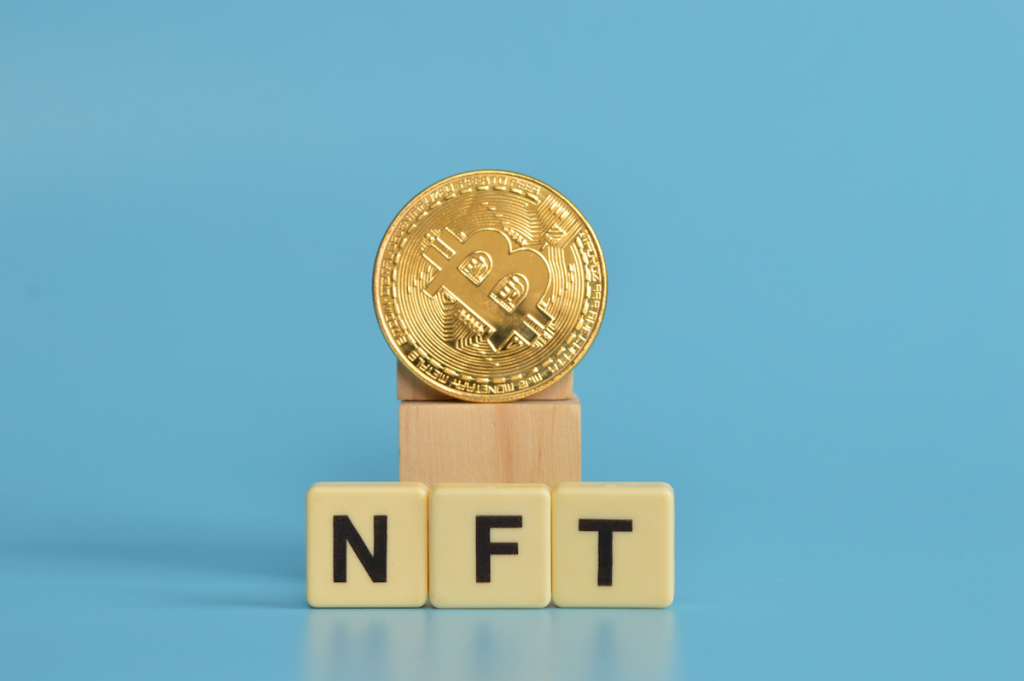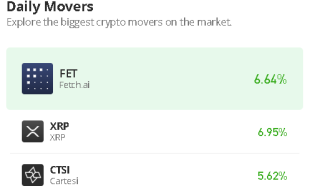Join Our Telegram channel to stay up to date on breaking news coverage
In A16z’s recent report on the “State of Crypto 2023“, NFT-backed financing activity is rising, promising new uses and applications to emerge. After a frantic speculative period and subsequent cooldown, NFT purchases again show positive growth.
Non-fungible tokens (NFTs) have emerged as a player in the industry, opening the door to new opportunities such as NFT-backed financing (NFT-Fi). This comes as the world of finance keeps on evolving.
It is worth noting that the NFT- backed financing has the potential to reshape the financial landscape. Additionally, it can create new investment opportunities for both traditional and crypto-based institutions. According to the “Non-fungible Tokens Global Market Report 2023“, the sector – which is set to grow from US$21.48 billion in 2022 to US$32.89 billion in 2023, at a compound annual growth rate (CAGR) of 53.1% – stands as a testament to the significant impact of NFTs on the financial realm.
However, to harness the full potential of NFT financing, integrating traditional finance principles and developing best practices and robust regulatory frameworks are essential. This ensures stability, fosters trust and contributes to a sustainable future for the NFT-fi industry.
In the new landscape, crypto-native blockchain engineers, and traditional finance veterans, are building protocols to harness idle potential capital efficiency. This will act as a means to access instant liquidity and increase the utility of these digital assets.
The Disclosure of NFT- financing
NFT-backed financing, also called “NFT lending,” is a form of decentralized finance. It allows individuals to use their non-fungible tokens (NFTs) as collateral to obtain loans or lines of credit.
In this model, the borrower pledges their NFTs as collateral. Notably, the lender evaluates the value of the NFT based on its market price and other factors. If the NFT meets the lender’s requirements, the borrower can receive a loan in cryptocurrency or stablecoins. The borrower is responsible for paying the loan with interest within a specified period. However, if they fail to repay the loan, the lender may take possession of the NFT collateral.
Unlocking the Value of NFTs
Further, liquidity for NFTs has been among the significant issues in the crypto space. However, NFT financing is proving to be an innovative way for investors to access liquidity through the value of their NFT assets. Additionally, with NFT-lending, users needing immediate liquidity no longer need to sell their digital assets, especially if the market price is low.
This approach has several advantages over traditional lending models, including lower transaction fees, faster approval times, and greater flexibility. Significantly, NFT-lending can democratize access to capital, foster innovation by supporting creators and artists, and provide a new avenue for investment opportunities in the digital sector.
What is the growth of NFT-backed financing?
Investors are drawn to the growing market potential for high returns, as seen in high-profile NFTs such as Beeple’s EVERYDAYS: The First 5000 Days sold over US$69 million, former Twitter CEO Jack Dorsey’s first-ever tweet that sold for US$2.9 million, and LeBron James’ famous dunk that sold for US$208,000.
These sales fueled a craze for NFTs in 2021, and the market expansion fueled the growth of NFT-Fi. The NFT market has grown tenfold in the last two years and is expected to keep growing. While traditional illiquidity relative to other digital assets, the growing demand for NFTs has popularized liquidity solutions, causing the NFT lending space to grow spontaneously over the past year.
Comprehending the risks involved
The NFT-backed loans provide an opportunity to unlock additional liquidity from digital assets. However, they also pose significant risks due to the volatility of NFTs. A case in point from 2021 involves an “Elevated Deconstructions” NFT used as collateral for a US$12,000 loan. Initially valued at approximately US$39,600, the value of the NFT soared to about US$300,000 within a month. This is following endorsements from prominent figures such as Snoop Dogg. Despite this appreciation, the borrower defaulted on the loan, eventually forfeiting the high-value NFTs.
Such scenarios spotlight the lend-to-own policy, a strategy some lenders adopt to obtain potentially lucrative NFTs if the borrower fails to repay the loan. However, lenders also face downside risk – the volatile nature of the NFT market means that loan terms can fluctuate significantly due to intangible factors such as a diminution in collateral value and changes in popularity.
On the other hand, Borrowers should tread carefully, especially given the high-interest rates attached to these loans. In 2022, the annual percentage rate (APR) on NFT-Fi reached 302% for seven days, and loan terms increased to 90 days. Furthermore, as with traditional finance, borrowers risk damaging their credit scores with loan defaults, potentially making it more difficult to secure future loans.
The Best Practices For Borrowers and Lenders
NFT-fi adoption requires education and awareness to foster confidence in NFT-backed financing among potential borrowers and lenders. While a regulatory framework and robust technical infrastructure will ensure the stability of NFT-Fi, a set of best practices is also required to ensure the security of NFT-backed loans. Here are some of the proactively addressed risks for lenders:
- Diligently assess the value and liquidity of NFT collateral, considering factors such as rarity, demand, and market trends.
- Evaluate the borrower’s creditworthiness through credit score and on-chain credit history to mitigate risk.
- Manage risks by diversifying the debt portfolio in order to reduce the impact of market volatility.
- Closely monitor market behavior to reduce exposure to high-risk assets and adjust lending criteria accordingly.
Notably, here are some best practices for borrowers:
- Provide data on past sales, market trends, and potential future demand to assure lenders about the value and stability of their NFT assets.
- Diversify your NFT collateral mix to reduce reliance on the performance of a single asset, provide a buffer against market volatility and, very importantly, provide a more attractive risk profile to lenders.
- Submit a clear plan for the loan, including future income generation, to show repayment capabilities.
- Maintain a healthy debt-to-income ratio and make timely loan repayment a priority.
Well-defined responsible practices can contribute to a thriving NFT-backed finance ecosystem.
Democratizing the Future of Finance
NFT-backed financing is expanding the utility of NFTs by unlocking liquidity, reducing entry barriers, and increasing market efficiency. As a result, it is expected to play a significant role in the ongoing growth and adoption of NFTs in the years to come.
While NFT financing is a relatively new concept in finance, the emergence of NFT-based lending and borrowing platforms, allowing individuals to lend or borrow money using NFTs as collateral, opens up a new financing avenue. Provides, especially for those who cannot. There are traditional forms of collateral.
NFT financing, underpinned by traditional finance principles of risk management, transparency, and regulation, demonstrates the promising potential to democratize finance and make it accessible to every individual.
Read More:
- NFT Sales Drop 10% This Week, As Bitcoin & Ethereum Rival For NFT Market Dominance
- Bitcoin NFTs Pump 110% in Sales in the Past 24 Hrs, Here’s What Driving This Growth
Join Our Telegram channel to stay up to date on breaking news coverage



